Radiator Hose Replacement
How To Replace Radiator Hose
Helpful Information
Most radiator hoses are made out of silicone based rubber that offers resistance to hardening and cracking. Hoses can also show signs of bulging when they get close to failure, others can fail with no warning. High quality radiator hoses have multiple-ply construction with a fabric mesh reinforcement depending on the application.
Hoses Need to be Replaced When:
- Showing signs of bulging
- Cracked and dry
- Hoses are more than 8 years old
- Flashlight
- Jack stands
- Floor jack
- Coolant
- 5. 6. Hose clamps
- Replacement radiator hose
- Fluid catch basin
- Pliers/channel locks hose clamp removal tool
- Screw driver set
- Pick Tool
- Always clean the hose fitting before installing the new hose.
- Recheck the cooling system after a couple of days to ensure proper operation.
- Use new hose clamps.
Easy step by step guide on how to replace an automotive radiator coolant hose, this information pertains to most vehicles.
Difficulty Scale: 2 of 10
Begin with the vehicle parked on flat ground, in park with the emergency brake set, engine cold.
Step 1 - Open the radiator cap to release any residual pressure and to allow the coolant to flow freely when drained.
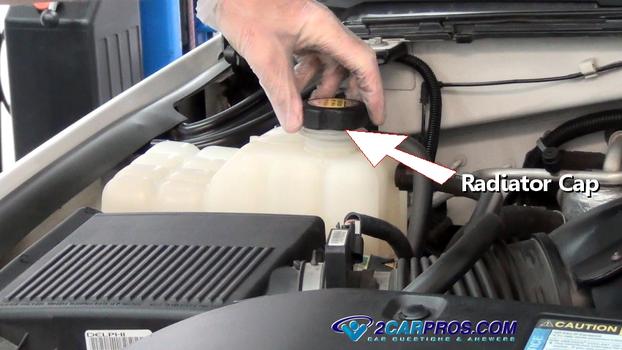
Removing Radiator Cap
Step 2 - Next, locate the radiator drain plug which is where the system coolant will be drained from. (Note: Some cooling systems do not have a drain valve, the lower radiator hose should be used to drain the system.)
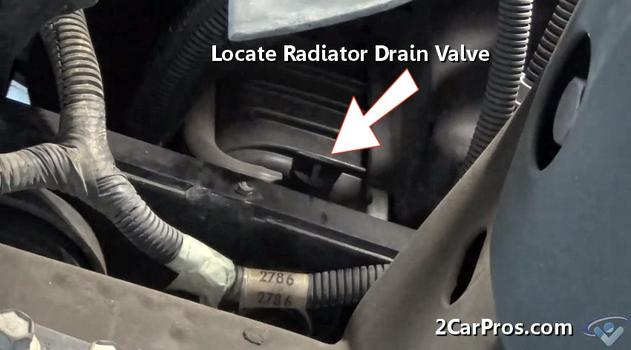
Locate Radiator Drain Plug
Step 3 - Once located, loosen the drain plug allowing the coolant to flow into a catch basin, tighten the drain plug once the coolant has completely drained.

Draining Coolant
Step 4 - Once the coolant has drained, identify the radiator hose that needs to be replaced.

Upper Radiator Hose
Step 5 - At each end of the hose, clamps are used to secure the hose to the radiator and engine. Pliers/channel locks or a hose clamp installation tool can be used to loosen the clamp, a twisting motion will help loosen the seal of the hose.

Removing Upper Radiator Hose Clamp
Step 6 - Remove the remaining hose clamps at the opposite end of the hose.

Removing Upper Radiator Hose Clamp
Step 7 - After the hose clamps have been removed from the clamping area, use a pick or screw driver to "break" the seal by forcing it between the hose and fitting.

Hose Removal Tool
Step 8 - Next, grasp the hose and twist the hose which will fully release the hose seal.
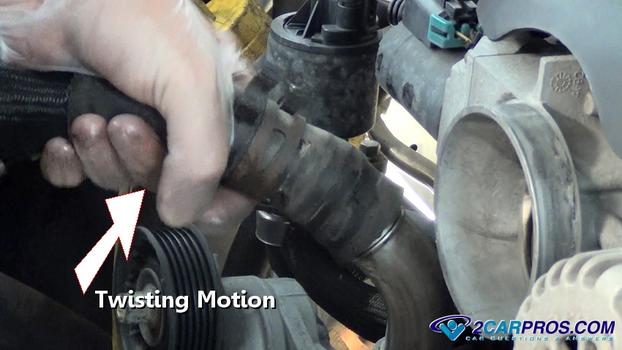
Twisting Motion
Step 9 - The hose will pull off the fitting, a small amount of coolant maybe present which is normal. (Note: A small amount of coolant can be trapped on top of the closed thermostat.)

Radiator Hose Removed
Step 10 - Match the new radiator hose to the old hose to ensure a proper installation.
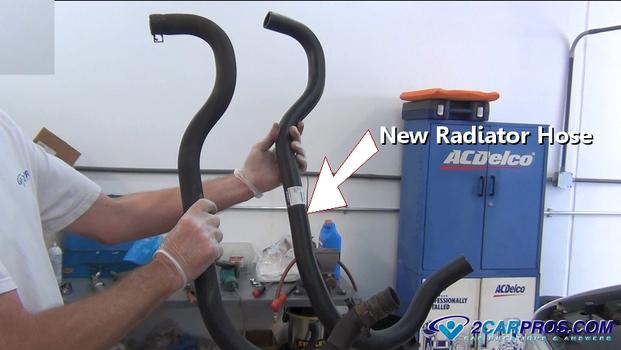
New Radiator Hose
Step 11 - After transferring the hose clamps to the new hose and cleaning fitting ends, push the new hose onto the fitting while squeezing the clamp open, repeat this for action the opposing hose end. (Note: Replace any clamps that are broken or worn.)

Install New Radiator Hose
Step 12 - When installing the hose clamps position the clamp in front of the fitting ridge, this ridge is designed to help the hose and clamp stay secure under pressure. The alignment of the clamp should be "square" (not crooked) to hold pressure needed to successfully seal.

Clamp Position
Step 13 - Install any shields or bracing that was removed in the repair.

Install Shields
Step 14 - Once the new hose or hoses have been replaced, refill the radiator with coolant. Start the engine and allow to warm up to operating temperature which will allow the thermostat to open, continue adding coolant until the level is between the indicator lines on the coolant reservoir.
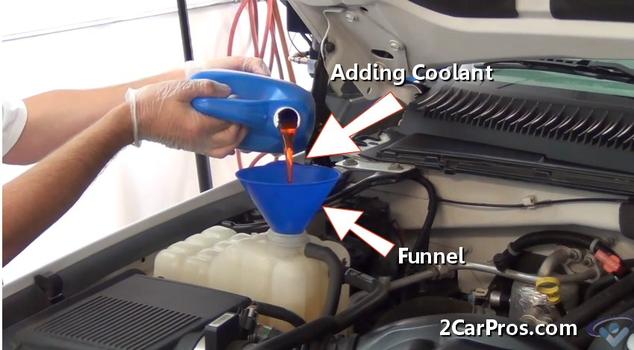
Refill Coolant
Step 15 - When the job is complete and the cooling system has been filled, reinstall the radiator cap and tighten, allow the engine to run while checking for leaks. If leaks are present release the system pressure and reposition the clamp.

Radiator Cap

Removing Radiator Cap

Locate Radiator Drain Plug
Step 3 - Once located, loosen the drain plug allowing the coolant to flow into a catch basin, tighten the drain plug once the coolant has completely drained.

Draining Coolant

Upper Radiator Hose

Removing Upper Radiator Hose Clamp

Removing Upper Radiator Hose Clamp

Hose Removal Tool

Twisting Motion

Radiator Hose Removed

New Radiator Hose

Install New Radiator Hose

Clamp Position

Install Shields

Refill Coolant

Radiator Cap
Comments
Post a Comment